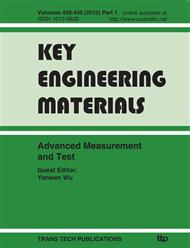[1]
Liang-Chih Huang, Peitsang Wu, and Bih-Shiaw Jaw, A Study of Applying Fuzzy Analytic Hierarchy Process on Management Talent Evaluation Model, 2001 IEEE, pp.1484-1488, (2001).
DOI: 10.1109/nafips.2001.943768
Google Scholar
[2]
Robert E. Lewis, and Robert J. Heckman, Talent management: A critical review, Human Resource Management Review, vol. 16, pp.139-154, (2006).
DOI: 10.1016/j.hrmr.2006.03.001
Google Scholar
[3]
Jackson, S. E., and Schuler, R. S, Human resource planning: Challenges for industrial/organizational psychologists, American Psychologist, vol 45, No. 2, pp.223-239, (1990).
DOI: 10.1037/0003-066x.45.2.223
Google Scholar
[4]
Rothwell W. J., Effective succession planning: Ensuring leadership continuity and building talent from within, New York: Amacom, (1994).
Google Scholar
[5]
Pascal, C., Talent management systems: Best practices in technology solutions for recruitment, retention, and workforce planning, Canada: Wiley, (2004).
Google Scholar
[6]
Grando A, and Sianesi A, Supply management: a vendor rating assessment, CEMS Business Review, vol 1, No. 1, pp.199-212, January (1996).
Google Scholar
[7]
Wang Ting, Yi Shuping, and Yang Yuanzhao, Performance evaluation method for business process of machinery manufacturer based on DEA/AHP hybrid model, Chinese journal of mechanical engineering, vol 20, No. 3, pp.91-97, March (2007).
DOI: 10.3901/cjme.2007.03.091
Google Scholar
[8]
Monezka RM, and Trecha SJ, Cost-based supplier performance evaluation, Journal of Purchasing and Materials Management, vol 24, No. 2, pp.2-7, February (1998).
Google Scholar
[9]
Das C, and Tyagi R, Wholesaler: a decision support system for wholesale procurement and distribution, International Journal of Physical Distribution and Logistics Management, vol 24, No. 10, pp.4-12, October (1994).
DOI: 10.1108/09600039410074746
Google Scholar
[10]
Xiaoli Tang, and Junwen Feng, A�P Theory and Application expectation, Statistics and Decision-making, vol 12, No. 3, pp.138-140, March. (2006).
Google Scholar


